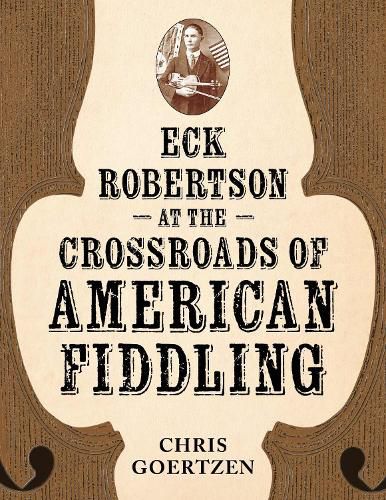Readings Newsletter
Become a Readings Member to make your shopping experience even easier.
Sign in or sign up for free!
You’re not far away from qualifying for FREE standard shipping within Australia
You’ve qualified for FREE standard shipping within Australia
The cart is loading…






The Texas Panhandle's frontier days were fresh in memory when fiddler Eck Robertson (1887-1975) arrived. Cowboys still worked on ranches in the 1910s but barbed-wire fences abounded too. Robertson pursued a continually evolving strategy to profit from the feverish transformation of living history into marketable nostalgia. He adopted cowboy dress clothes for his first recording session in New York in 1922 and became known as a "Famous Cowboy Fiddler." His stubborn vision spawned traditional-yet-transformed Texas fiddling.
Robertson criticized other fiddlers because their playing was "just the same thing over and over." Robertson insisted that his fiddling-his balance of cleaving to tradition while adding new content-was the way of the future. Author Chris Goertzen traces Robertson's story through detailed biography, music transcriptions, and careful musical analysis. Though Robertson struggled to attain consistent financial success as a performer, he cultivated a varied repertoire which allowed him to balance offering the comfort of shared recollection with fresh excitement. His biggest hit, "Sally Goodin," was a game changer, both as played live and as the very first country music recording. With his undeniable talent and forward thinking, Robertson took a musical practice that already had a broad reach and a distinguished history in a direction that would guarantee a niche in modern American culture.
$9.00 standard shipping within Australia
FREE standard shipping within Australia for orders over $100.00
Express & International shipping calculated at checkout
The Texas Panhandle's frontier days were fresh in memory when fiddler Eck Robertson (1887-1975) arrived. Cowboys still worked on ranches in the 1910s but barbed-wire fences abounded too. Robertson pursued a continually evolving strategy to profit from the feverish transformation of living history into marketable nostalgia. He adopted cowboy dress clothes for his first recording session in New York in 1922 and became known as a "Famous Cowboy Fiddler." His stubborn vision spawned traditional-yet-transformed Texas fiddling.
Robertson criticized other fiddlers because their playing was "just the same thing over and over." Robertson insisted that his fiddling-his balance of cleaving to tradition while adding new content-was the way of the future. Author Chris Goertzen traces Robertson's story through detailed biography, music transcriptions, and careful musical analysis. Though Robertson struggled to attain consistent financial success as a performer, he cultivated a varied repertoire which allowed him to balance offering the comfort of shared recollection with fresh excitement. His biggest hit, "Sally Goodin," was a game changer, both as played live and as the very first country music recording. With his undeniable talent and forward thinking, Robertson took a musical practice that already had a broad reach and a distinguished history in a direction that would guarantee a niche in modern American culture.